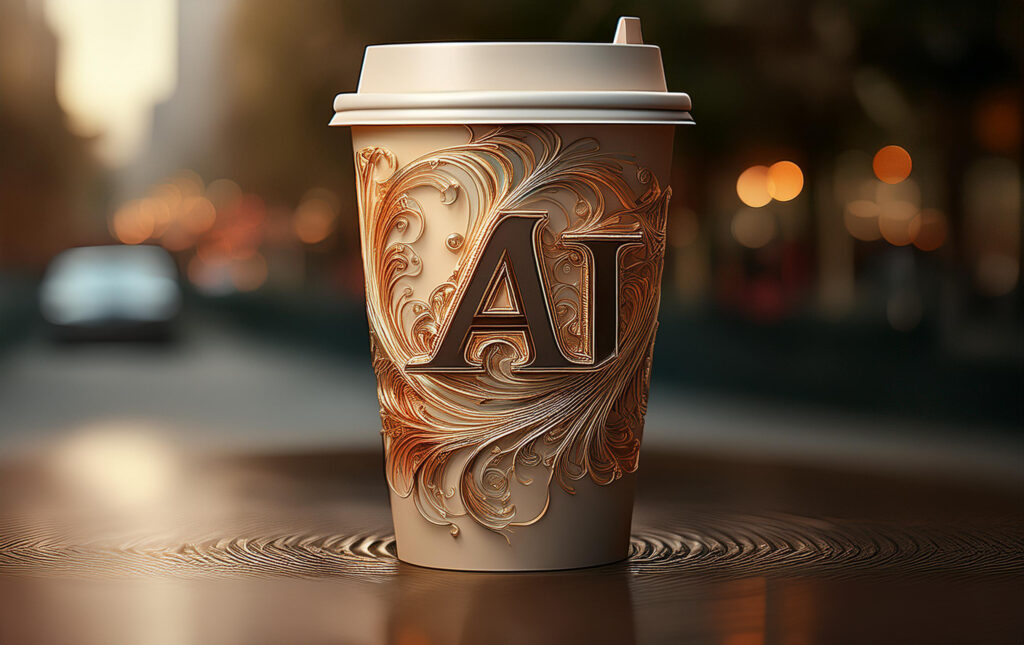
It’s fair to say, articles about AI and marketing aren’t in short supply right now. My LinkedIn feed is full of them (and half of them seem to be about ChatGPT and copywriting).
But there’s one topic that really doesn’t get as much attention — using AI to help create social media strategies.
As a social media strategist, I can tell you it’s a domain of marketing where AI can make a huge difference to what we do. And no, I’m not just talking about a quicker way to create strategies. We all know fast fixes are a recipe for disaster. I’m talking about increasing the quantifiable effectiveness of our campaigns.
Let me explain.
Finding inspiration beyond B2B – Starbucks and Mastercard.
Compared to B2C, B2B marketing is behind the curve when it comes to using AI in social. But as an industry, there are loads of use cases we can replicate.
One notable example is Starbucks’ use of AI to customize marketing messages and offers. By analysing customer data and behaviour (such as purchase history and order patterns), Starbucks sends personalized offers and recommendations, including via social media. It’s easy to see how this same approach could be used in a B2B space.
In a similar way, Mastercard uses AI to track billions of public online conversations and spot ‘micro trends’, related to topics like travel, music, and entertainment. Using all this AI analysis, Mastercard then creates tailored campaigns that tie into specific trends that are generating online buzz.
In one example, Mastercard spotted a spike in conversations around a celebrity changing careers. Off the back of this, they created a campaign featuring a behind-the-scenes video of their consumer platform (Priceless) that offers cardholders’ experiences, offers, and rewards.
The result? A 100% increase in engagement rates on social platforms.
Our approach to using AI.
There are certain things that AI is spectacularly better at than humans. Data-crunching is one of them — and that’s a dream for a social strategist like me.
So how can we take advantage?
For starters, we can now analyze huge amounts of data on customers, competitors, and market trends (far more than could ever be done manually). This, in turn, can help us create better targeted messages, content strategies, and campaign formats.
As an agency, we’ve started experimenting with an AI-based tool called Clearscope. It uses machine learning to recommend keywords and suggests ways to optimize content, all based on understanding things like the search intent of our target audiences.
It’s early days, but we’ve found it’s handy for refining headlines and tweaking social messaging in subtle ways, which can help increase online visibility and engagement.
Straying slightly from strategy, AI is also perfect for doing the heavy lifting on tasks such as image generation. For instance, we’ve used Midjourney (a generative AI tool) to mock-up placeholder images for social posts before we book out time with a designer.
Admittedly, we’re nowhere near using it for every campaign. But it’s the kind of tool that we can see helping inspire our designers to generate attention-grabbing visuals that jump out on busy LinkedIn feeds.
Striking the right balance — a skill we’ll all need.
If you can start mastering AI, it can transform how you approach social strategy and execution. As touched upon, it’s great for SEO, content refinement, and identifying trends that require intense data analysis.
But there are also things to be wary of, like data reliability issues. AI makes mistakes, and human oversight will remain critical to validate the truth of any findings it generates.
The answer that I’m, perhaps inevitably, moving towards here is that B2B social strategists should treat AI as an assistant. From my experience, it can be both astonishingly capable and utterly fallible all at once.
Being able to discern between these two extremes is a skill we’ll all increasingly need in our industry.
To find out how we can help build a social strategy for your brand, get in touch today.